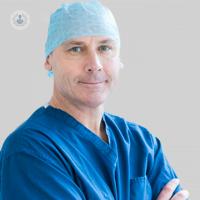Is an upper lid blepharoplasty right for me?
Autore:An upper lid blepharoplasty is a popular aesthetic procedure that aims to reverse the signs of ageing or a familial trait in the upper eyelids. Successful blepharoplasty results rely on:
- Thorough knowledge of eyelid anatomy;
- Use of established surgical techniques;
- Realising both the patient’s and surgeon’s expectations;
- Knowing how to best avoid complications;
- Having an appreciation of what constitutes human facial beauty.
However, there are many physical and psychological factors that can help determine whether an upper lid blepharoplasty is suitable, and evaluation of these is critical. Mr Charles East, a leading facial plastic surgeon and otolaryngologist, reviews what a patient evaluation for blepharoplasty involves and what special considerations have to be made for patients with thick-skin and heavier brows.
What is involved in a blepharoplasty evaluation?
In terms of psychology, the ideal candidate for upper lid blepharoplasty is someone who has wanted to reverse the signs of ageing in their eyelids for quite a while, and has realistic expectations for the potential outcomes of this procedure.
Medical history must also be evaluated for potential blepharoplasty patients. The following are considered:
- Patients are checked for any abnormal skin conditions. Assessment is best done without the effects of botulinum toxin present.
- Any medications a patient takes are also reviewed, particularly for any medicines that could affect bruising.
- Ophthalmic (eye)history is also evaluated. This is crucial because patients who suffer from dry eye, for example, could suffer further from this condition following blepharoplasty.
Next, the eyebrows are evaluated in terms of their position as this is a key factor that affects how upper lid blepharoplasty is carried out. Although the ideal female brow position changes over time with new and old trends, the brow will always be above the orbital rim. In patients with thicker skin and heavier brows, it may be necessary to elevate the brow surgically. A surgeon on evaluating the brow will be careful to take note of its natural position, regardless of how they are plucked or positioned.
Following the eyebrows, the eyelids are evaluated for how much skin is present and how much of the lid is visible, patient by patient with the gaze upward and downward. In patients with thinner skin, their eyelid skin usually has a creped, often hooded appearance, whereas in thick-skinned patients, the eyelid skin is usually unlined and coarse and the upper lid crease might not be visible. In oriental eyes there may be no natural crease.
Considerations for patients with heavy upper lids before surgery
Patients with heavy upper lid skin will often require thorough counselling before surgery because the procedure will result in a completely different looking appearance compared to what the patient previously looked like. This is because a heavy upper eyelid is not just age-related, but a facial characteristic in young people as well - some patients would never have had a visible upper eyelid crease. Therefore, blepharoplasty will create a new look rather than just a rejuvenated look. Healing in thick-skinned patients will take longer as well.
Hence, a surgeon’s final decision to carry out a blepharoplasty is based on a thorough evaluation of psychological, medical and ophthalmological factors.
If you interested in upper lid blepharoplasty, make an appointment with a specialist.



